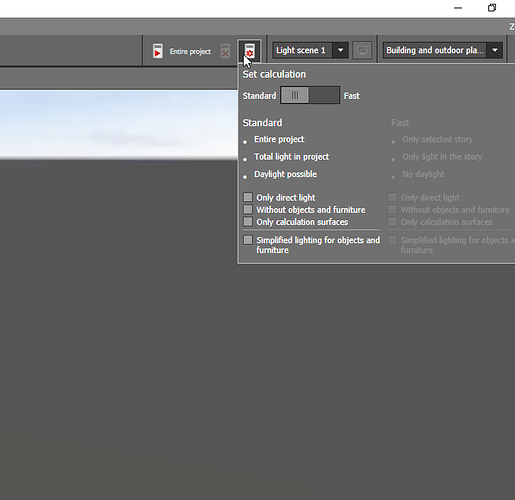Yup, this would be the first thing to fix. If you are still getting errors, it might be worthwhile to turn both the rooms completely black and repeat the calculation with a measurement location close to the window.
The “problem” with Dialux is that there are very few options for the user to set. Radiosity, the calculation, method employed in Dialux employs meshing to subdivide geometry into smaller surfaces. The accuracy of results will be proportional to the resolution of the mesh. In a tool like AGI32, this can either be controlled directly by specifying the mesh level or by letting the computer do it for you via adaptive-subdivision. Here is a short video that explains this.
With Dialux, one only has two simplistic options: standard and fast (whatever they mean!).
These options work well if one is doing electric lighting simulations but arent really helpful to comprehend the calculation method for daylighting simulations.
If you are serious about doing daylighting calculations with Radiosity-based tools Relux or Licaso would be better options. Relux has a Radiance-backend that has been around for several years and Licaso, a fairly recent tool, was benchmarked against Daysim.
The idea with the black room should work becuase then you do away with ambient calculations completely.

